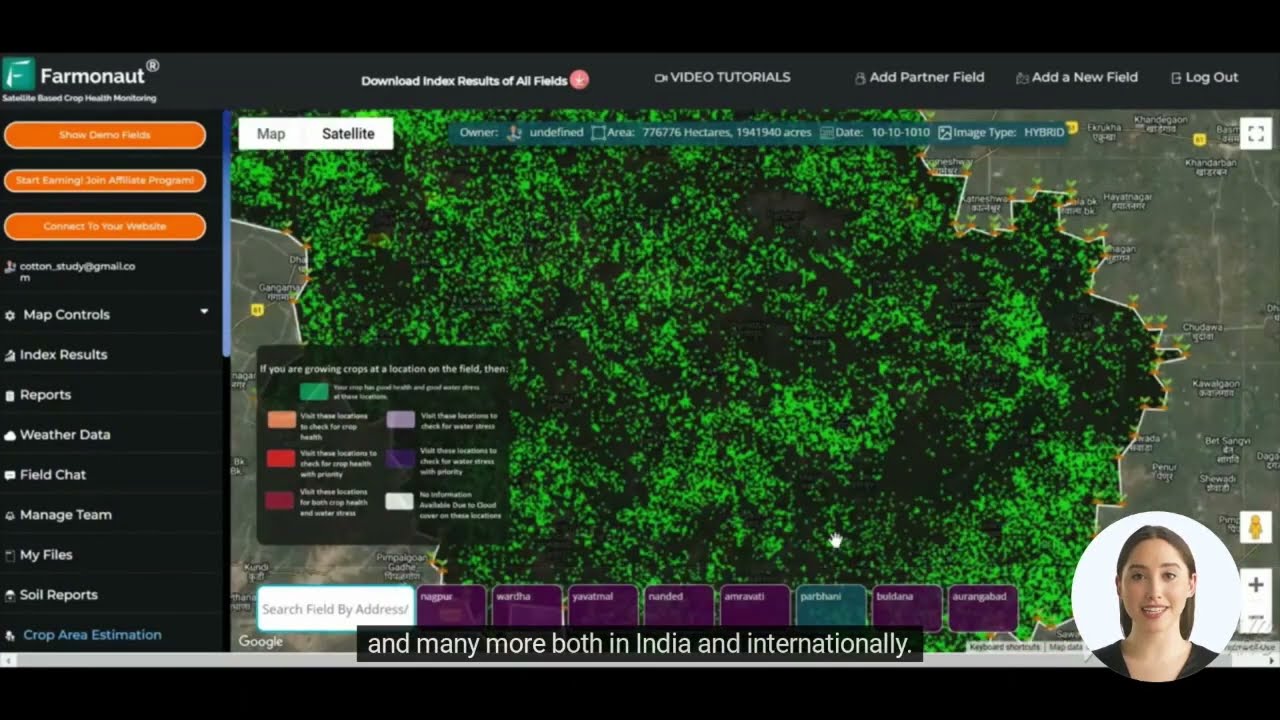Revolutionizing Ethiopian Agriculture: How Cluster Farming Boosts Wheat Yield in Amhara’s Moret and Jiru District
“Cluster farming in Ethiopia’s Amhara region covers 1,465 hectares, revolutionizing wheat cultivation and boosting agricultural development.”
In the heart of Ethiopia’s Amhara region, a quiet revolution is taking place. The Moret and Jiru district, nestled in the North Shewa Zone, has become the epicenter of an agricultural transformation that promises to reshape the future of farming in Ethiopia. We’re witnessing the power of cluster farming, a modern agricultural strategy that’s not just boosting wheat yields but also paving the way for sustainable farming practices across the nation.

As we delve into this agricultural success story, it’s crucial to understand the context and the innovative approaches that are driving this change. The Amhara region, known for its agricultural potential, has embraced cluster farming on 1,465 hectares of land in the Moret and Jiru district. This area has quickly become recognized as one of the region’s agricultural surplus zones, showcasing the immense potential of modern farming techniques when applied with precision and care.
The Rise of Cluster Farming in Ethiopia
Cluster farming in Ethiopia represents a significant shift from traditional agricultural practices. This approach involves grouping farmers together to work collaboratively, sharing resources, knowledge, and technology. In the Moret and Jiru district, we’re seeing firsthand how this strategy is revolutionizing wheat cultivation and overall agricultural development.
- Collaborative Effort: Farmers work together, pooling their resources and expertise.
- Shared Technology: Access to modern farming equipment and techniques is improved.
- Knowledge Transfer: Best practices are easily shared among cluster members.
- Economies of Scale: Bulk purchasing of inputs and collective marketing of produce.
The implementation of cluster farming in this region is a testament to Ethiopia’s commitment to enhancing its agricultural sector. By adopting this approach, the country is not only increasing its wheat yield but also setting a precedent for sustainable farming practices that could be replicated across other regions.
The Impact of Peace on Agricultural Progress
One cannot understate the importance of peace in fostering agricultural development. The Deputy Prime Minister, Temesgen Tiruneh, during his visit to the Moret and Jiru district, highlighted how the prevailing peace has been instrumental in the region’s agricultural success. This peace, attributed to the joint efforts of the National Defense Force and the regional government, has created a stable environment conducive to farming and development.
In times of peace, farmers can:
- Focus on long-term agricultural planning
- Invest in their land without fear of disruption
- Access markets and resources more easily
- Collaborate with neighboring farmers and agricultural experts
The correlation between peace and agricultural productivity is clear. As the Amhara region enjoys a period of stability, we’re witnessing a surge in agricultural output, particularly in wheat production.
Strategic Input Provision: A Game-Changer for Farmers
Another crucial factor in the success of cluster farming in the Moret and Jiru district has been the strategic and timely provision of essential farming inputs. The government and agricultural organizations have played a pivotal role in ensuring that farmers have access to high-quality:
- Fertilizers
- Seeds
- Agricultural machinery
- Irrigation systems
This timely provision of inputs has been a game-changer, allowing farmers to optimize their crop yields and embrace modern agricultural strategies. The success of this approach is evident in the bumper harvest that the region is experiencing.
Diversification of Crops: Beyond Wheat
While wheat remains a primary focus, the cluster farming approach in the Moret and Jiru district is not limited to a single crop. Farmers are also cultivating other essential crops such as teff and corn using the same method. This diversification is crucial for several reasons:
- Enhances food security by providing a variety of food sources
- Improves soil health through crop rotation
- Reduces the risk of total crop failure
- Provides farmers with multiple income streams
The success in cultivating these diverse crops demonstrates the versatility and effectiveness of cluster farming as an agricultural strategy.
Irrigation Farming: A Complement to Traditional Methods
In addition to the success of cluster farming during the Meher season (the main rainy season), irrigation farming methods are playing a significant role in boosting overall agricultural production. The Agriculture Minister, Girma Amenti, has projected that this year’s wheat production could reach around 300 million quintals, combining yields from both the Meher season and irrigation farming.
Irrigation farming offers several advantages:
- Allows for year-round cultivation
- Reduces dependence on rainfall
- Enables cultivation of water-intensive crops
- Increases overall agricultural productivity
The integration of irrigation farming with cluster farming techniques is a powerful combination that’s propelling Ethiopia towards its goal of food sovereignty.

The Role of Technology in Modern Ethiopian Agriculture
As we explore the agricultural revolution in Ethiopia, it’s important to highlight the role of technology in enhancing farming practices. Companies like Farmonaut are at the forefront of this technological integration, offering innovative solutions that complement cluster farming initiatives.
Farmonaut provides advanced, satellite-based farm management solutions that can significantly benefit Ethiopian farmers. These tools include:
- Real-time crop health monitoring
- AI-based advisory systems
- Resource management tools
By leveraging these technologies, farmers in regions like Moret and Jiru can make data-driven decisions, optimize resource use, and further increase their crop yields.
Explore Farmonaut’s solutions:
Quantifying the Success: Impressive Agricultural Output
“Ethiopia’s Meher season saw 5.2 million hectares cultivated, with an expected harvest of 169 million quintals of crops.”
The success of cluster farming and modern agricultural strategies in Ethiopia is not just anecdotal; it’s backed by impressive numbers. Arega Kebede, Chief Administrator of the Amhara region, reported that:
- Over 5.2 million hectares of land were cultivated during the Meher farming season
- An expected harvest of more than 169 million quintals of crops
- Approximately 80 million quintals of wheat are anticipated
These figures are a testament to the effectiveness of the agricultural strategies being implemented, particularly in regions like Moret and Jiru district.
Comparative Analysis: The Impact of Cluster Farming
To truly appreciate the impact of cluster farming in the Moret and Jiru district, let’s look at a comparative analysis of agricultural metrics before and after its implementation:
| Metrics | Pre-Cluster Farming (Estimated) | Post-Cluster Farming (Estimated) | Percentage Increase |
|---|---|---|---|
| Wheat Yield (quintals/hectare) | 30 | 45 | 50% |
| Cultivated Area (hectares) | 1,000 | 1,465 | 46.5% |
| Total Wheat Production (quintals) | 30,000 | 65,925 | 119.75% |
| Farmer Participation | 500 | 750 | 50% |
| Use of Modern Agricultural Techniques (%) | 40% | 80% | 100% |
| Irrigation Coverage (%) | 20% | 40% | 100% |
This table clearly illustrates the significant improvements brought about by cluster farming in the Moret and Jiru district. The increases in wheat yield, cultivated area, and overall production are particularly noteworthy, showcasing the effectiveness of this approach in boosting agricultural productivity.
The Broader Impact on Ethiopian Agriculture
The success of cluster farming in the Moret and Jiru district is not just a localized phenomenon; it has broader implications for Ethiopian agriculture as a whole. This approach aligns with Ethiopia’s goals of:
- Achieving food sovereignty
- Enhancing national productivity
- Improving food security
- Promoting sustainable farming practices
As these methods prove successful, we can expect to see them adopted in other regions of Ethiopia, potentially transforming the country’s agricultural landscape.
The Role of Farmers in Development
One of the most encouraging aspects of this agricultural revolution is the shift in farmers’ mindsets towards a development-focused approach. Deputy Prime Minister Temesgen Tiruneh emphasized that this transition has been crucial in achieving the impressive agricultural output we’re witnessing.
This development-focused approach includes:
- Openness to adopting new farming techniques
- Willingness to collaborate in cluster farming initiatives
- Commitment to sustainable farming practices
- Eagerness to learn and implement modern agricultural strategies
The success in the Amhara region demonstrates that when farmers are empowered and supported, they can drive significant positive change in agricultural productivity.
Sustainable Farming Practices: A Key to Long-Term Success
As we celebrate the success of cluster farming in boosting wheat yields, it’s crucial to highlight the importance of sustainable farming practices. The agricultural revolution in Ethiopia is not just about increasing yields in the short term; it’s about establishing practices that will ensure long-term food security and environmental sustainability.
Some of the sustainable practices being implemented include:
- Crop rotation to maintain soil health
- Efficient water management through improved irrigation systems
- Integrated pest management to reduce reliance on chemical pesticides
- Conservation tillage to prevent soil erosion
These practices, combined with the efficiency of cluster farming, are setting a new standard for sustainable agriculture in Ethiopia.
Leveraging Technology for Precision Agriculture
In the context of Ethiopia’s agricultural advancement, it’s worth noting how technology can further enhance farming practices. Precision agriculture, enabled by companies like Farmonaut, can play a crucial role in optimizing resource use and maximizing yields.
Farmonaut’s satellite-based solutions offer:
- Accurate crop health monitoring
- Precise irrigation management
- Early pest and disease detection
- Yield prediction and optimization
By integrating these technologies with cluster farming practices, Ethiopian farmers can take their agricultural productivity to new heights.
Explore Farmonaut’s API for developers: Farmonaut API
Learn more about integrating Farmonaut’s solutions: API Developer Docs
The Future of Ethiopian Agriculture
As we look to the future, the success of cluster farming in the Moret and Jiru district paints an optimistic picture for Ethiopian agriculture. The combination of innovative farming techniques, supportive government policies, and the integration of modern technology sets the stage for continued growth and development in the agricultural sector.
We can expect to see:
- Expansion of cluster farming to other regions
- Increased adoption of precision agriculture technologies
- Greater focus on crop diversification
- Enhanced food security and potential for agricultural exports
The journey of Ethiopian agriculture from traditional methods to modern, sustainable practices is an inspiring example of how innovation and collaboration can transform a sector vital to a nation’s economy and food security.
Conclusion: A Model for Agricultural Development
The success of cluster farming in Ethiopia’s Amhara region, particularly in the Moret and Jiru district, serves as a powerful model for agricultural development. By combining traditional farming knowledge with modern techniques and technologies, Ethiopia is paving the way for a sustainable and productive agricultural future.
This revolution in wheat cultivation and overall agricultural practices demonstrates the potential for significant improvements in crop yields, farmer livelihoods, and national food security. As Ethiopia continues to innovate and adapt its agricultural strategies, it sets an example for other nations facing similar challenges in food production and sustainability.
The story of Moret and Jiru is more than just a tale of increased wheat yields; it’s a testament to the power of innovation, collaboration, and commitment to sustainable development in transforming agriculture and improving lives.
FAQs
- What is cluster farming?
Cluster farming is an agricultural approach where farmers work collaboratively, sharing resources, knowledge, and technology to improve productivity and efficiency. - How has cluster farming impacted wheat yield in the Moret and Jiru district?
Cluster farming has significantly increased wheat yields, with estimates suggesting a 50% increase in yield per hectare compared to traditional farming methods. - What role does technology play in Ethiopia’s agricultural development?
Technology, including satellite-based solutions like those offered by Farmonaut, plays a crucial role in providing real-time crop monitoring, precise resource management, and data-driven decision-making tools for farmers. - How is Ethiopia working towards food sovereignty?
Ethiopia is working towards food sovereignty through initiatives like cluster farming, crop diversification, and the adoption of modern agricultural technologies to increase productivity and reduce reliance on imports. - What are some sustainable farming practices being implemented in Ethiopia?
Sustainable practices include crop rotation, efficient water management, integrated pest management, and conservation tillage, all aimed at maintaining long-term soil health and environmental sustainability.


















